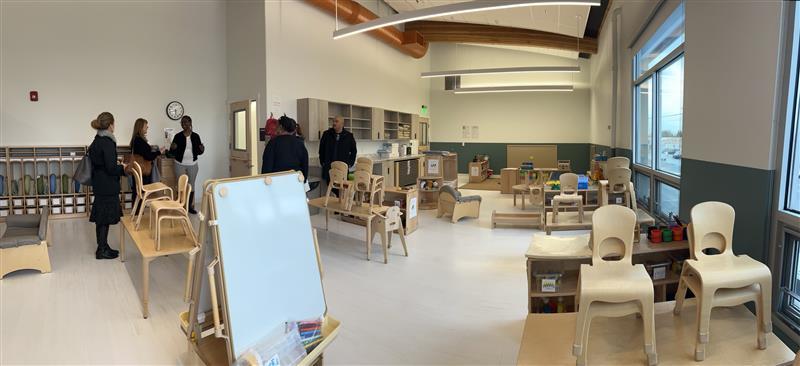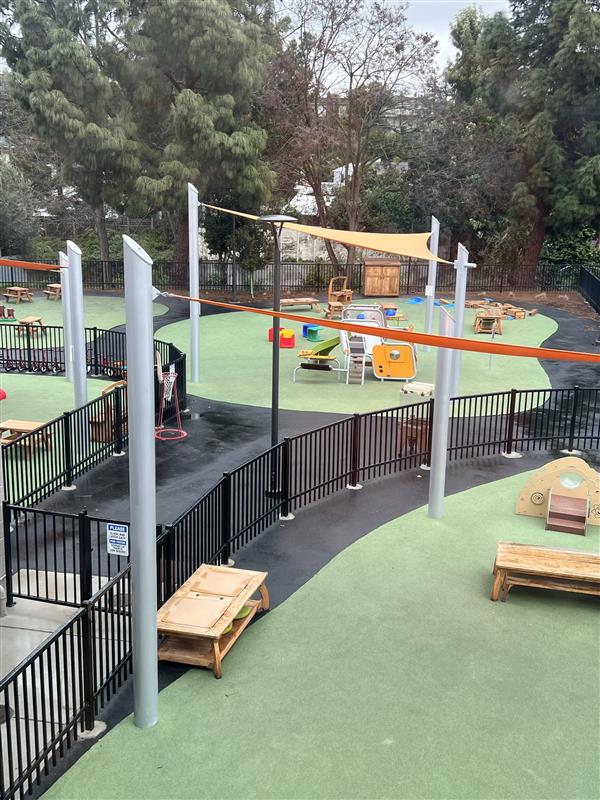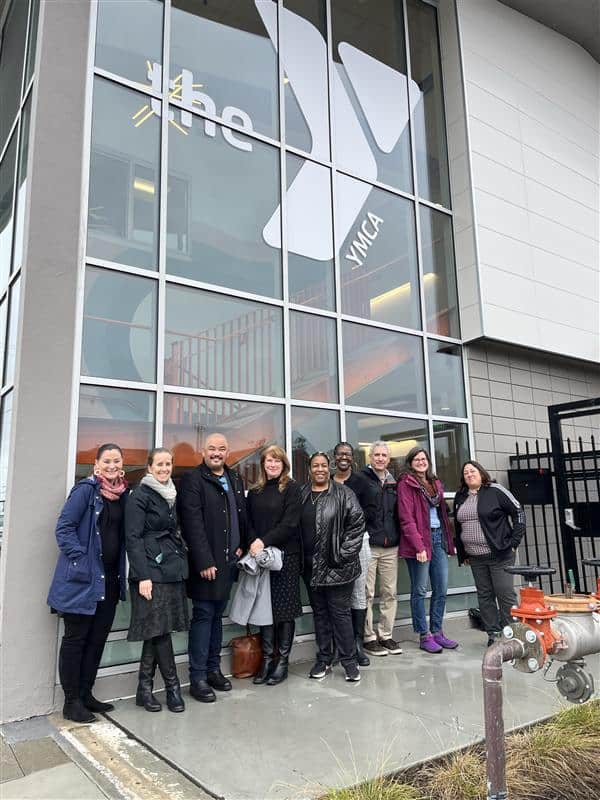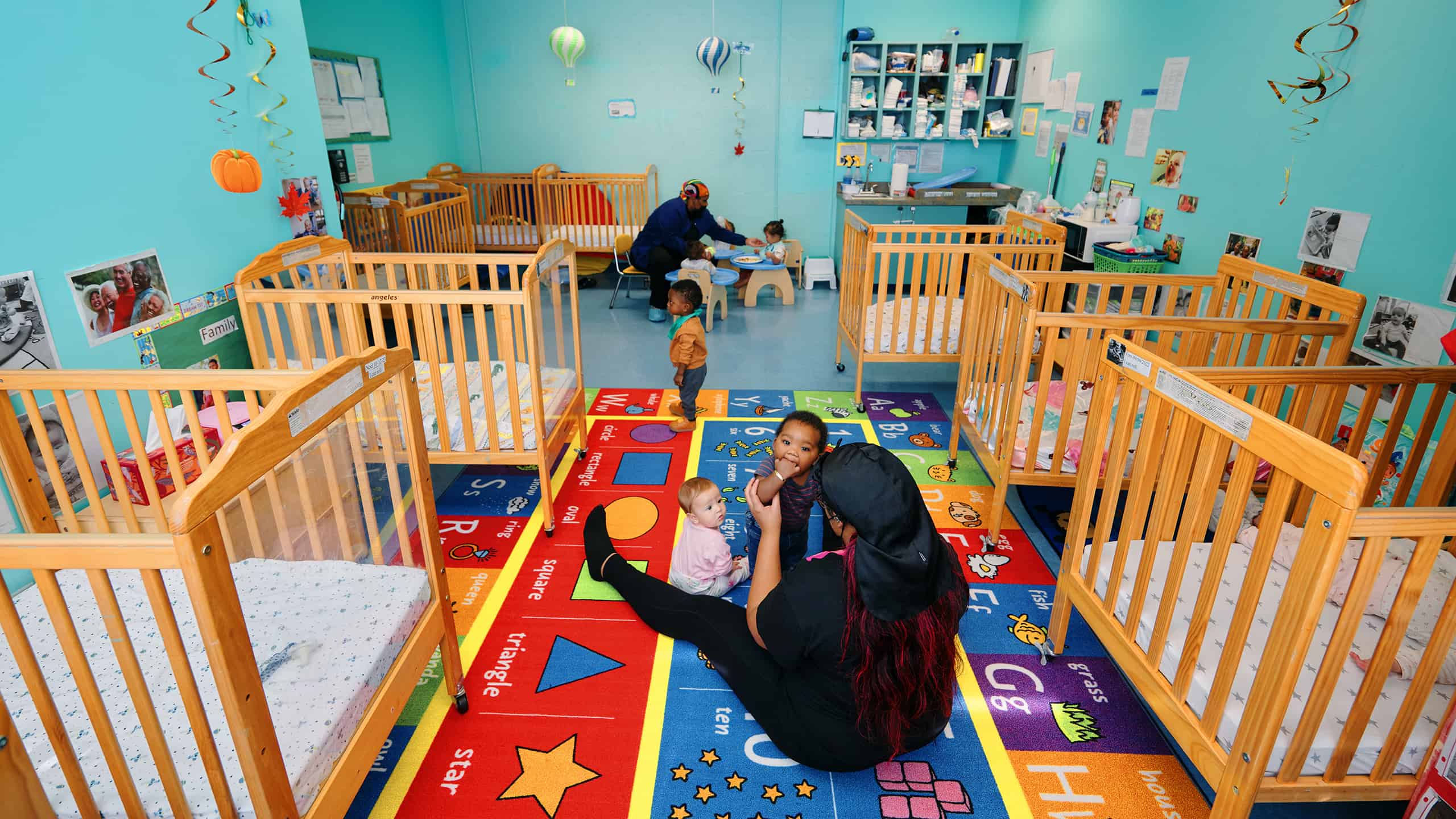LIIF believes that all children should be put on the road to success, no matter their ZIP code. We see this as a central component of our mission that “everybody in the United States should benefit from living in a community of opportunity, equity and well-being.”
Yet it’s a sobering fact that today only one in seven eligible children across the nation can access subsidized early care and education (ECE). That leaves millions of our youngest ones in under-resourced care environments. One critical issue is the financing of ECE centers, as the cost of providing high-quality child care often far exceeds current funding amounts.
Our organization works daily to close these gaps in access, looking to provide long-term, universal benefits of ECE.
Lack of Existing Funding has Created a Serious Undersupply of Licensed Child Care
The existing funding sources for ECE centers are primarily through family payments and public subsidies, thereby fueling inequity and often leaving low-income families struggling to afford the high cost of quality care. While these families may qualify for child care assistance, the current system has been severely underfunded, leading to significant gaps in access, particularly in the historically excluded communities LIIF serves. This inequity has created thousands of census tracts where there is a ratio of more than three young children to every licensed child care slot.
Quality child care is crucial for a child’s development. Lack of access to quality ECE can have long-term negative impacts on a child’s social, emotional and academic success. Conversely, children in high-quality child care are more likely to have positive experiences that help their brains develop to the fullest. After entering elementary school, they tend to score higher on math and language tests, plus they are better socialized. Addressing the undersupply of licensed child care requires comprehensive, sustained investments in that sector to build supply, expand affordability and support the workforce. This includes not just increasing the number of licensed child care slots, but also ensuring that these slots are in high-quality settings.
LIIF Senior Vice President, National ECE Angie Garling has emphasized the importance of quality and affordable ECE. In an op-ed co-authored for Semiconductor Digest she stated, “Child care is a public necessity. It also translates to a robust workforce … Now is the time for the semiconductor industry and other employers to partner with CDFIs and child care associations and organizations to be a part of the solution and to best meet the federal mandates of the CHIPS Act and the President’s Executive Order. Doing so will strengthen the nation’s overall economy – and set all children up for success.”
How NMTC Can Support the ECE Sector
The New Markets Tax Credit (NMTC) program can play a significant role in addressing inequities in child care. NMTC incentivizes community development and economic growth by attracting private investment to under-resourced communities. It allows individual and corporate investors to receive a tax credit against their federal income tax in exchange for making equity investments in financial intermediaries called Community Development Entities (CDEs).
The NMTC program can uniquely assist ECE centers by providing funding for facilities acquisition, renovation or new construction. NMTC features below-market rate, patient financing that can enhance project viability through lower interest rates, increased debt capacity, longer repayment terms and long-term permanent subsidy. Over time, this leads to more resilient facilities, expanded services, heightened community impact and stronger operating sustainability. With ECE centers facing challenges such as funding shortfalls, teacher shortages and training limitations, improving facility infrastructure is essential to creating safe and stimulating learning environments.
Inherent Challenges, Possible Solutions
- NMTC allocations typically have minimum project-size requirements, often $5 million or more. Many ECE projects have smaller facility-financing needs under that threshold. This creates a mismatch in scale between NMTC and typical ECE centers.
💡Solution: Bundle multiple, small-scale ECE projects into a larger NMTC transaction, which may make the process more efficient, including by the sharing of legal and transaction fees; however, it requires extensive coordination and may present challenges in ensuring all projects meet NMTC requirements and are located in eligible low-income communities. - ECE centers often operate on thin margins and tight budgets. This restricts their capacity to take on debt and their ability to cover costs of complex compliance and reporting required for NMTC projects.
💡Solution: Developing financial structures that accommodate the limited budgets of ECE centers (e.g., offering patient, low-cost or forgivable loans) could make NMTC financing more accessible. There may be city, state or federal funds available that could be leveraged through the NMTC structure. Another solution is providing the centers operating on thin margins with loan-readiness training or offering more strategic business support. This step could help make NMTC financing more accessible to a broader range of ECE centers. - The intricate nature of NMTC, involving financial and compliance reporting, can be burdensome for ECE providers who may lack the specialized knowledge to effectively navigate these requirements.
💡Solution: Streamlining the NMTC compliance process for ECE providers or offering specialized support services can alleviate the administrative burden and make the program more amenable to smaller organizations. Additionally, there may be opportunities to enhance existing shared-services models to include more support for lending and even NMTC. This would enable ECE centers to more cost-effectively access specialized financial support.
LIIF Loan Officer, Brighter Futures Fund Lily Berticevich, who focuses on Special-Purpose Credit Program (SPCP) loans for child care facilities led by Black women and serving Black families, emphasizes that: “Another valuable role for the NMTC sector to play in supporting ECE development is making ECE providers aware of NMTC as an option and helping them understand how NMTC can benefit them. This includes clarifying what it means to prepare for and be ready to take on an NMTC project.”
Case Studies
Sunnydale, San Francisco
An example of effective deployment of NMTC for an ECE project is the Sunnydale community center in San Francisco. This development is located in the historically under-resourced southeastern part of the city. LIIF provided $13.6 million NMTC allocation authority to finance the construction of a 28,000-square-foot, multi-tenant community facility with an ECE tenant that will annually serve 72 children. Additionally, the San Francisco Boys and Girls Club has space for 135 children and additional community space that can accommodate 200 low-income residents. Rents are heavily subsidized, with the ECE center and Boys and Girls Club each paying just $1 per year in rent (100% below the San Francisco market rate of $30 per square foot.)
Hayward, California (Jan. 10, 2024 site visit images below)
In 2021, LIIF provided a $9.5 million NMTC allocation for the YMCA of the East Bay to renovate a 1953 two-story building. Now, Cherryland Early Learning Center in Hayward (Alameda County) can provide free, year-round, full-day early care and education. Most of the families served at the center identify as Latino, with Spanish as their primary language. That’s why culturally responsive, wraparound wellness services are offered on site: medical and dental exams; behavioral health screenings; vision and hearing screenings; early intervention/special education; and daily breakfast, lunch and snacks for 80 low-income children ages 0-5.
“Our organization has witnessed first hand the power of NMTC in capacity building of child care centers,” explains President/CEO Fran Gallati at YMCA of the East Bay. “Our staff, families and the community are thrilled at the outcome – Cherryland Early Learning Center in Hayward is now an example of a high-quality ECE space supporting our children.”



The success of this pair of projects demonstrates not only the potential of NMTC to expand community-driven initiatives, but LIIF’s commitment to fostering accessible, high-quality ECE environments.
Conclusion
Expanding access to affordable, quality childhood education requires continued effort and investment from multiple partners. Continuing to build creative collaborations between public agencies, employers, CDFIs and child care providers is critical to addressing endemic systems gaps.
LIIF has been doing ECE work for 25 years. Our goal has always been the same: to grow and preserve the supply of child care in communities that meet families needs. Our national work is scaling, now including three business verticals: facilities fund management; capacity building; and advisory services. We encourage any anchor institutions committed to empowering their communities to reach out and engage with us in this effort – whether as direct NMTC investors or by connecting local advocacy groups. With ongoing partnerships channeling funds, capacity building and dedicated champions, we can progressively turn child care deserts into equitable care ecosystems.
Another valuable role for the NMTC sector to play in supporting ECE development is making ECE providers aware of NMTC as an option and helping them understand how NMTC can benefit them. This includes clarifying what it means to prepare for and be ready to take on an NMTC project.
LIIF Loan Officer, Brighter Futures Fund Lily Berticevich
